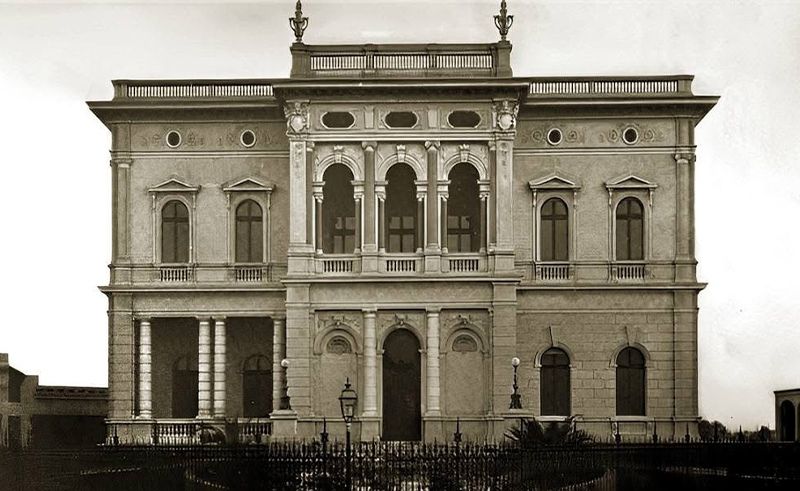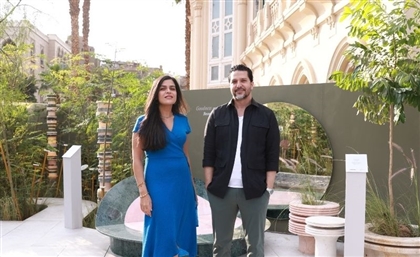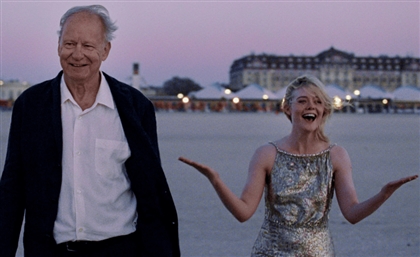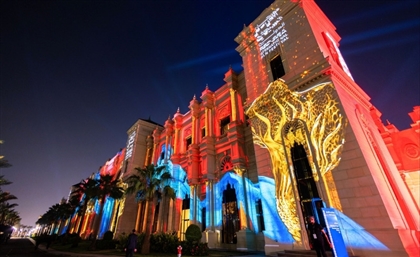The Ever-Shifting Fate of Charles Beyerle’s Mansion in Garden City
From Estate to School to Political Hub—Charles Beyerle Palace, aka Fuad Serageddin’s Mansion, is a monument to change.

Hemmed within the labyrinthine streets of Garden City, an enigmatic palace lingers in the shadows of its past, whispering tales of its once-glorious reign. Designed by Italian architect Carlo Prampolini for Charles Beyerle Bey, Chairman of The Egyptian Land Bank (La Crédit Foncier Égyptien) in 1910, this mansion was meant to be a testament to power and prestige. Yet fate had other plans. Beyerle’s life was cut short just days after he moved in, leaving the palace suspended in an eerie limbo—its opulence untouched, yet its story forever altered.
It is said that after World War II, the Charles Beyerle Bey palace took on a new identity, no longer a private residence but a school for distinguished young girls. At its helm was Swedish headmistress Ms. Dagmar Berg, who hoped to rival the prestigious Catholic school, Mère de Dieu. Yet, as the tale goes, the school did not last. The palace was later acquired by Serag el-Dine Pasha, who repurposed it as the headquarters of the nationalist Wafd Party, and since then it had also become known as Fuad Serageddin's Mansion.
From a family estate to an elite academy to a political stronghold, the mansion has seemingly worn many faces—its true past woven into layers of shifting narratives. And though its purpose may have changed, its architecture remains, standing as a silent witness to all that may, or may not, have transpired within its walls.
The mansion's ornate façade stands behind its wrought-iron fence—confined, yet undeniably regal. Its classical elevation exudes hierarchy and order, crowned by a commanding parapet that frames the structure with a sense of finality. Rising from the ground, pilasters and columns assert their presence, echoing the harmony of classical orders. On the first floor, elegant French windows stretch vertically along the walls, their stately forms accentuated by triangular pediments that lend depth and rhythm to the composition.

Sculptural elements weave their way into the building’s skin—lion heads exuding strength, cherubic figures whispering serenity, and gargoyles looming with an eerie mystique. Each carving carries its own meaning, evoking a different sensation. Even the palace gates are crowned with twin dragons, their fierce mouths frozen in an eternal exhale of fire. Much like the mansion’s shifting fate, these mascarons seem to embody its ever-evolving identity.
Crossing the threshold, you are vacuumed into a world where time warps and spaces shift around you. The cool marble beneath your feet anchors you, yet the walls seem to pull you deeper, closing in with an unshakable presence. The staircase unfurls like a current, sweeping your gaze upward, compelling you to follow. Perched atop the balustrade, two sculpted birds stand frozen in time, their presence at once delicate and solemn, teetering between whimsy and gravitas.
Above, a chandelier unfurls from the ceiling like the limbs of an ancient tree, its branches twisting in ornate, Gothic splendor—an echo of timeless French craftsmanship. The space is layered with movement and stillness, a silent dialogue between structure and ornament, history and presence. Timeless yet tethered to the past, the spaces inside are enchanted with neglect—decayed yet unchanged. The warm red wallpapers cling to the walls, embracing classic Louis XV and XVI wooden and upholstered furniture. Crystal chandeliers hang in quiet elegance, while wooden panels adorned with delicate floral motifs whisper of a bygone refinement. Mirrors rest above grand chimneys, reflecting fragments of a history frozen in time. But what stands out most is the towering stained-glass window—an art piece that doesn’t just command attention but breathes life into the space, once casting a kaleidoscope of colour across the room. It feels like a scene pulled from an old-world dream, where time lingers, and beauty remains undisturbed.


- Previous Article Ed Sheeran Collaborates with Iranian Producer Ilya Salmanzadeh
- Next Article Major New Tax Rules Announced in the UAE
Trending This Week
-
Dec 04, 2025



























